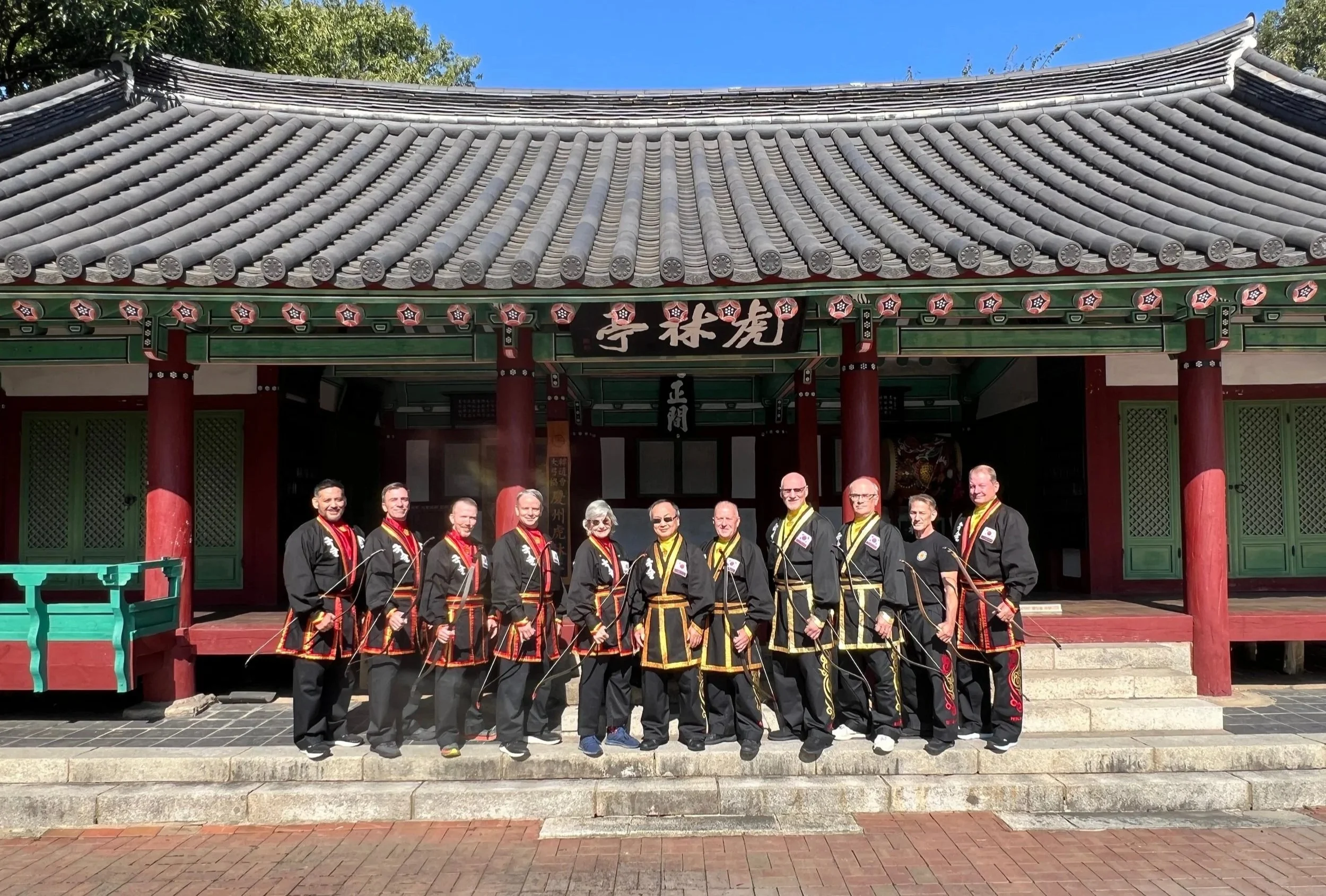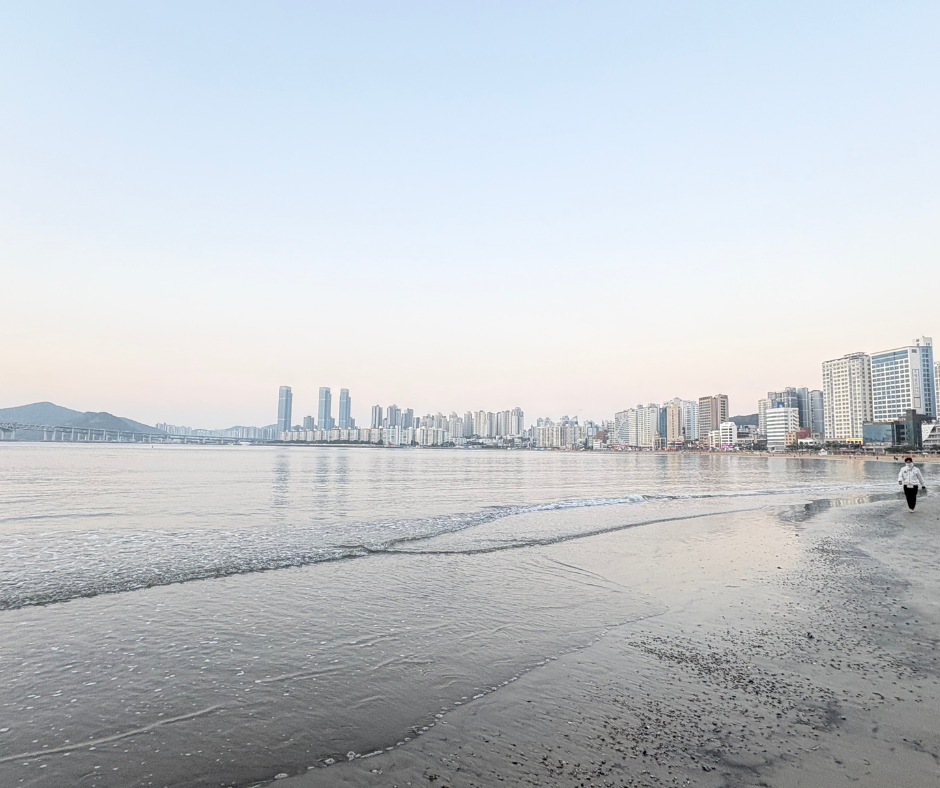Journey to Korea 2025: Training, Tradition & Personal Discovery
In 2024, after my visit to Korea, I left with the distinct feeling that I had only scratched the surface. There was something about the country — its culture, its people, its deep martial heritage — that stayed with me long after I returned home. So, in October 2025, I travelled back once again, with eleven other senior UK / US Kuk Sool Masters, eager to deepen my understanding of the art that has shaped my life for nearly half a century.
What followed was a remarkable journey across Korea: part training retreat, part cultural exploration, and part personal reflection.
WKSA Senior Master’s
Arrival in Incheon — Korea’s Principal Airport
After nearly twenty hours of travel, our first night in Incheon was simply about rest: a comfortable hotel, a quiet room, and a chance to reset before the adventure ahead.
Exploring Seoul & Journeying to Pusan
Changdeokgung Palace & Secret Garden
Our first full day took us into the heart of Seoul. A tour guide led us through one of the city’s celebrated royal palaces, Changdeokgung Palace, complete with its renowned Secret Garden — an extraordinary pocket of calm and natural beauty hidden behind palace walls.
From there, we travelled six hours south to Pusan in a luxury coach. Our beachfront hotel offered stunning views of the coastline and the illuminated bridge stretching across the bay — a perfect backdrop to begin the next stage of the trip.
Sunrise on the Shoreline
Pusan Shoreline
Early the next morning, my roommate Master Carl Barrie and I set out before dawn in search of a sunrise. Instead, we witnessed something even more profound.
The shoreline was filled with elderly Koreans jogging, stretching, walking, and exercising with a level of discipline and energy that was genuinely inspiring. Watching people in their later years take such active care of their health left a deep impression. It reinforced a truth central to martial arts — longevity comes from consistent, meaningful daily practice.
Pusan sunrise
Temples, History & The APEC Summit
In the morning, we made a trip to the United Nations Memorial Cemetery in Korea, located in Busan — a burial ground for United Nations casualties of the Korean War. It contains 2,300 graves and is the only United Nations cemetery in the world. A fitting reminder of Korea’s turbulent history.
Later that day, we visited one of Korea’s most beautiful coastal Buddhist temples, Haedong Yonggungsa Temple — a place where traditional architecture meets the natural power of the ocean.
Haedong Yonggungsa Temple
From there, we travelled to Gyeongju — a city rich in history, defined by its role as the capital of the ancient Silla Kingdom. During our stay, it was also hosting the 2025 APEC Summit. With world leaders including President Trump and President Xi Jinping attending, security was intense. At one point, we watched Trump’s helicopter fly directly overhead on its approach to the venue. It added an unexpected, almost surreal dimension to our visit.
Traditional Korean Archery
146 metres to hit the target
For two days, we immersed ourselves in traditional Korean archery. Shooting long-range targets at 146 metres demanded patience, control, and a willingness to adapt. Progress was steady, and by the end many of us were striking the target consistently.
We also received a fascinating lecture from a senior master on the history and construction of the Korean horn-bow — a weapon that combines artistry, precision, and centuries of martial tradition.
Practising Kuk Sool in Its Natural Setting
The next leg of our trip took us to quiet countryside accommodation surrounded by mountains — an ideal setting for Kuk Sool training.
Over two days, we practised sword cutting, knife throwing, and various advanced techniques. But the standout experience for me was gaining a deeper understanding of the Korean moon knife, known as the Waldo.
Our accommodation
The Korean Moon Knife (Waldo)
This traditional polearm is distinguished by its crescent-shaped blade mounted on a long shaft. Historically used by elite warriors and guards, the Waldo allowed for sweeping, circular motions, hooking techniques, and powerful cutting arcs. The blade’s crescent form symbolises timing, rhythm, and the cyclical patterns found in nature — principles at the heart of traditional Korean martial arts.
Training with the Waldo by moonlight in the mountains was a highlight I will never forget.
Korean Moon Knife
Free Time, Food & Everyday Korean Life
Another morning of training was followed by a day of relaxation, shopping, and experiencing everyday Korean culture. One constant throughout the trip: we never went hungry. Korean cuisine was always close at hand and consistently excellent.
The famous Korean chicken and ginseng dish is called Samgyetang
WKSA Archery Tournament & The Journey Home
WKSA archery competition
On our final day, we visited the Korean Kuk Sool archery tournament in Kim hae, reconnecting with several high-ranking masters and Korean colleagues. It was the perfect conclusion to a trip that blended training, tradition, and community.
From there, we made the six-hour journey back to Incheon for the flight home. After a stop in Doha, I eventually landed back in London — tired yet fulfilled, carrying new insights and memories that will stay with me for years.
Reflections & Highlights
Training under the moonlight — an experience that felt both ancient and deeply spiritual.
Studying the Waldo and gaining hands-on practice with this remarkable traditional weapon.
The food — always plentiful and always delicious.
Exceptional accommodation, from coastal hotels to peaceful countryside lodgings.
The camaraderie of the group, which made every moment richer and more enjoyable.
A heartfelt thank you to SSKJN Alex Suh and his wife Karen, whose organisation, care, and attention to detail ensured that we were supported in every possible way.










